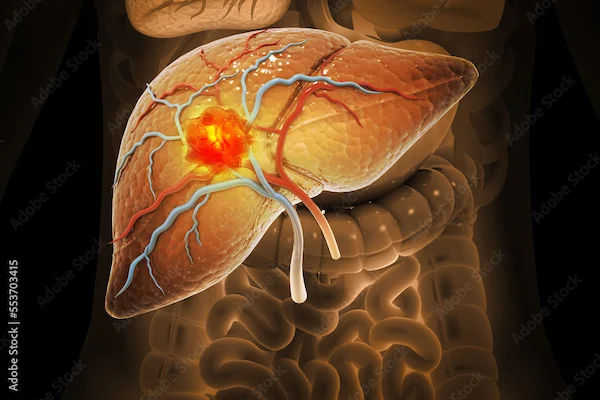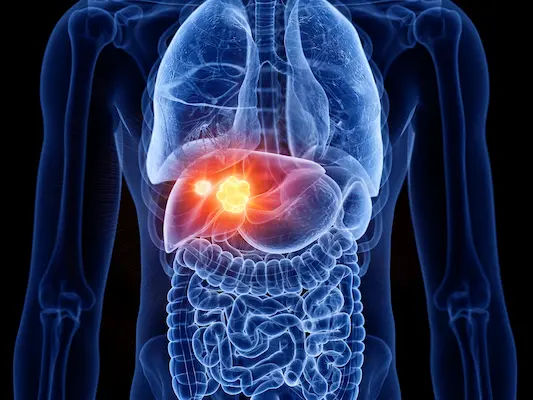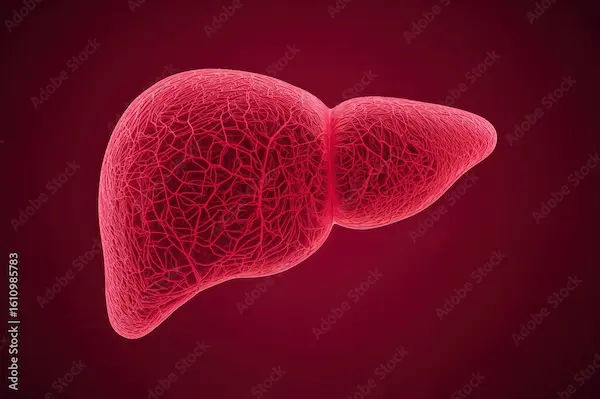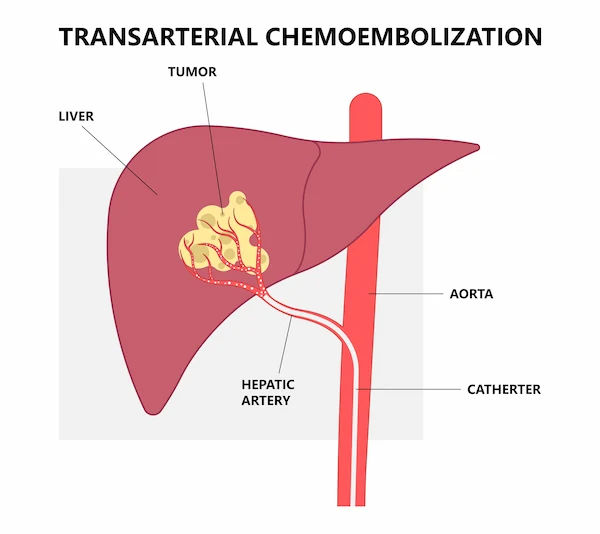What Leads To Signs Of Liver Cancer
Learn about the key risk factors and underlying conditions that can lead to the development of liver cancer signs and symptoms. Early awareness of cirrhosis, chronic hepatitis B/C, and heavy alcohol use is crucial for prevention and timely diagnosis.

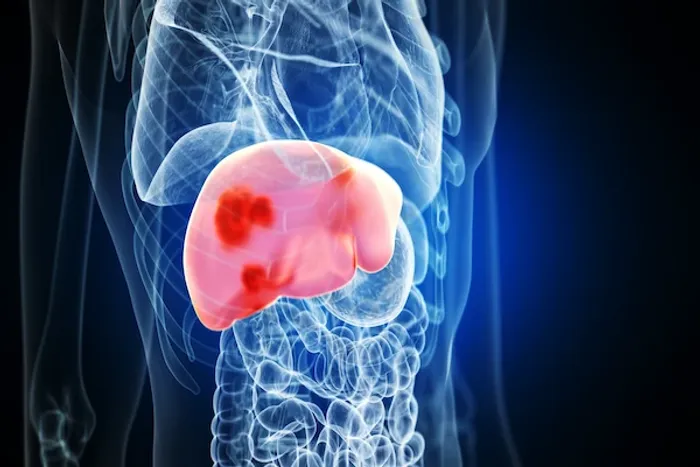
Introduction
Liver cancer can be difficult to spot early because symptoms often appear late or mimic common digestive issues. Understanding what leads to the signs of liver cancer—and why they happen—can help you recognise red flags sooner, seek timely evaluation, and improve outcomes. In this guide, we unpack how the liver works, what changes when cancer develops, and which warning signs matter most. We’ll connect the dots between causes (like hepatitis B or C, cirrhosis, or fatty liver disease) and the symptoms they produce, from subtle fatigue and appetite loss to jaundice and abdominal swelling. You’ll also learn about key risk factors, early signs of hepatocellular carcinoma (HCC), how symptoms differ from cholangiocarcinoma, and when to see a doctor. Where testing is relevant, we’ll outline practical next steps—such as ultrasound screening and blood tests—so you know what to expect. If persistent symptoms concern you, consider consulting a doctor online with Apollo 24|7 for further evaluation. This article blends clear explanations with evidence from leading health authorities to empower you with actionable knowledge about liver cancer.
The liver’s job—and why cancer disrupts it?
A healthy liver filters toxins, produces bile for digestion, stores and releases energy, builds proteins like albumin and clotting factors, and regulates hormones. Because it sits in the right upper abdomen under the ribs, nearby structures include the gallbladder, diaphragm, and major blood vessels. When liver cancer develops—most commonly hepatocellular carcinoma (HCC)—tumours can compress bile ducts, distort normal architecture, and hijack blood flow. This leads to cholestasis (bile back-up), portal hypertension (pressure in the portal vein), and reduced liver cell function.
These changes explain many liver cancer signs. For example, bile duct compression can cause jaundice (yellowing of the skin/eyes) and dark urine, while reduced albumin production leads to swelling (ascites, leg edema). Tumour growth in the capsule of the liver or stretching the diaphragm can cause right shoulder pain. The liver’s role in appetite and metabolism partly explains early satiety and unintended weight loss—classic but easy-to-miss early signs of liver cancer. It’s also why advanced disease can cause bleeding/bruising (lower clotting factors) and cognitive changes (hepatic encephalopathy) when toxins build up.
Consult a Top General Physician
Primary liver cancer types and why signs differ?
Hepatocellular carcinoma (HCC) starts in hepatocytes (liver cells) and accounts for the majority of primary liver cancers worldwide. Intrahepatic cholangiocarcinoma (iCCA), which begins in bile duct cells inside the liver, is less common but often presents with obstructive symptoms like jaundice earlier than HCC.
- HCC signs: Often subtle at first—fatigue, appetite loss, upper abdominal discomfort, weight loss. As tumours grow, patients may notice swelling (ascites), abdominal pain, or signs of portal hypertension like enlarged spleen or varices. Paraneoplastic effects (e.g., low blood sugar, high calcium) may occur due to tumour-secreted substances.
- iCCA signs: Because bile ducts are involved, cholestatic features—jaundice, dark urine, pale stools, itching—may appear earlier. Pain and weight loss are also common.
- Benign mimics: Hemangiomas, focal nodular hyperplasia, and adenomas can cause fullness or discomfort but are non-cancerous. Imaging helps distinguish these from malignant lesions .
What leads to liver cancer in the first place?
Most liver cancer signs trace back to long-standing liver injury and scarring (cirrhosis). Chronic inflammation drives DNA damage and abnormal regeneration, setting the stage for cancer.
- Cirrhosis: The strongest risk factor; most HCCs develop in cirrhotic livers. Causes include viral hepatitis, alcohol-related liver disease, and non-alcoholic steatohepatitis (NASH).
- Viral hepatitis: Hepatitis B (HBV) and hepatitis C (HCV) significantly raise HCC risk. HBV can cause liver cancer even without cirrhosis due to viral DNA integration; HCV typically causes cancer through cirrhosis.
- NAFLD/NASH: Fatty liver tied to obesity, diabetes, and metabolic syndrome has become a leading driver of HCC in many regions. NASH can progress to cirrhosis; HCC can occasionally arise even without cirrhosis.
- Alcohol and toxins: Heavy alcohol use accelerates cirrhosis. Aflatoxin (a mold toxin found in improperly stored grains and nuts) synergizes with HBV to markedly increase HCC risk in some regions.
- Genetic/metabolic conditions: Hemochromatosis (iron overload), alpha-1 antitrypsin deficiency, Wilson disease, and certain rare disorders elevate risk.
Unique insight: Most symptoms reflect the “end” of a long chain—chronic injury → scarring → architectural distortion → cancer. That’s why prevention and surveillance in at-risk people save lives. Ask your clinician if you qualify for 6‑monthly ultrasound screening; this is standard for many with cirrhosis or chronic HBV [9]. Apollo 24|7 offers convenient home collection for tests like hepatitis B/C, liver function tests, and AFP when advised.
Early signs of liver cancer: subtle but important
Early liver cancer often causes no obvious symptoms. When present, early signs are nonspecific:
- Fatigue and decreased stamina
- Loss of appetite or feeling full quickly (early satiety)
- Unintentional weight loss
- Mild, persistent discomfort in the right upper abdomen
- Vague nausea or bloating after small meals
Because these symptoms overlap with common issues (stress, viral illness, gastritis), they’re easy to dismiss. What raises concern is persistence and clustering—e.g., 4–6 weeks of reduced appetite and unexplained weight change, or ongoing right upper quadrant discomfort in someone with known liver disease. In high-risk individuals (cirrhosis, chronic HBV/HCV, NASH with fibrosis), even subtle changes warrant attention. Surveillance helps catch early tumours when curative treatments (resection, ablation, transplant) are more likely.
Example: A 52-year-old with diabetes and fatty liver notices clothes fitting looser despite no dieting and a “stitch” under the right rib after meals. Even if lab tests are only mildly abnormal, an ultrasound can be a key next step. If symptoms persist beyond two weeks, consult a doctor online with Apollo 24|7 to discuss whether imaging is appropriate.
Advanced signs—and what’s causing them?
As tumours expand or liver function declines, signs become clearer:
- Jaundice: Yellow skin/eyes, dark urine, pale or clay-coloured stools—caused by bile pigment buildup from blocked ducts or failing hepatocytes.
- Ascites and swelling: Fluid in the abdomen and legs due to portal hypertension and low albumin production.
- Pain: Dull or aching pain in the right upper abdomen; referred right shoulder pain if the diaphragm or liver capsule is irritated.
- Fever and fatigue: Inflammatory cytokines from the tumour can cause low-grade fevers and malaise.
- Easy bruising/bleeding: Fewer clotting proteins from impaired liver function.
- Itching (pruritus): Accumulation of bile acids in the skin.
- Paraneoplastic syndromes: Some HCCs produce hormones or hormone-like substances, leading to low blood sugar (hypoglycaemia), high calcium (hypercalcaemia), or increased red blood cells (erythrocytosis).
These signs often overlap with complications of cirrhosis. For instance, ascites is a sign of portal hypertension regardless of tumour presence, but new or rapidly worsening ascites in a cirrhotic person should prompt cancer evaluation. Similarly, sudden worsening of diabetes control can reflect tumour-related metabolic effects.
Unique insight: A “step-up” pattern—new jaundice or ascites in someone previously stable—often signals a structural change like a tumour blocking bile flow or increasing portal pressure. Don’t wait it out; timely imaging is key. If you develop jaundice, severe abdominal swelling, or confusion, seek urgent care.
Signs specific to tumour location and type
Symptoms can hint at where the tumour is and what it’s affecting:
- Bile duct-centric lesions (iCCA or HCC near ducts): Earlier jaundice, pale stools, intense itching.
- Vascular involvement (tumour thrombus in portal/hepatic veins): Rapid ascites, splenomegaly, variceal bleeding risk.
- Subcapsular tumours: Localised right upper quadrant pain, worse with movement or deep breaths; possible referred shoulder pain.
- Central mass effect: Early satiety and fullness due to compression of stomach or increased abdominal pressure.
HCC vs iCCA differences:
- HCC often arises in cirrhotic livers; early systemic symptoms (fatigue, weight loss) may predominate before overt jaundice.
- iCCA tends to produce cholestatic symptoms earlier due to ductal involvement.
Unique insight: While symptom patterns are suggestive, only imaging and labs can accurately localise disease. In practice, ultrasound is the first step, followed by multiphase CT or MRI for characterisation.
How can liver cancer be mistaken for other problems?
Many conditions share overlapping symptoms:
- Gallstones or bile duct stones: Pain after fatty meals, jaundice episodes.
- Peptic ulcer or gastritis: Epigastric pain, nausea, early satiety.
- Irritable bowel syndrome: Bloating and discomfort without structural disease.
- Fatty liver (NAFLD): Fatigue and mild right upper pain without cancer.
- Metastatic cancer to the liver: Multiple lesions and systemic symptoms; not a primary liver cancer but can cause similar signs.
Rule of thumb: If symptoms are new, persistent, or changing, and especially if you have risk factors, don’t self-diagnose. Your clinician can differentiate with targeted tests. If your condition does not improve after trying these methods, book a physical visit to a doctor with Apollo 24|7.
Unique insight: A “trigger calendar” can help differentiate: track meals, pain timing, and stool/urine colour. Food-triggered sharp pain points more to gallbladder disease; progressive, dull ache with weight loss warrants liver imaging.
Who is at higher risk—and why symptoms matter more?
High-risk groups include:
- People with cirrhosis of any cause
- Chronic hepatitis B carriers (with or without cirrhosis) and those with chronic hepatitis C
- Individuals with NAFLD/NASH, especially with diabetes and obesity
- Heavy alcohol users
- People with hemochromatosis or other metabolic/genetic liver diseases
- Regions with high aflatoxin exposure
For these groups, even mild symptoms should prompt evaluation because baseline risk is elevated. Surveillance—typically ultrasound ± AFP every six months—is recommended for many, including most with cirrhosis and certain HBV populations (e.g., Asian men >40, Asian women >50, Africans >20, or anyone with a family history.
- Unique insight: Risk isn’t static. Curing HCV lowers but does not eliminate HCC risk if cirrhosis remains. Similarly, HBV carriers on antivirals still need periodic surveillance depending on risk profiles. Discuss your personalised plan with your doctor. Apollo 24|7 offers convenient home collection for LFTs and hepatitis tests to streamline follow-up.
When to seek medical care?
See a doctor if you have:
- Persistent right upper abdominal discomfort or fullness lasting more than 2–4 weeks
- Unintentional weight loss, reduced appetite, or early satiety for several weeks
- Jaundice, dark urine, or pale stools
- Increasing abdominal girth, leg swelling, or easy bruising
- New or worsening fatigue, especially with risk factors for liver disease
- Fever or night sweats without a clear cause
Seek urgent care if you develop severe abdominal pain, confusion, vomiting blood, black stools, or sudden jaundice. If symptoms persist beyond two weeks, consult a doctor online with Apollo 24|7 for further evaluation. They can advise on initial blood tests and imaging, and arrange referrals as needed.
- Unique insight: If you’re high-risk and between surveillance scans, you don’t need to wait for your next scheduled ultrasound—new symptoms justify an earlier check.
How doctors evaluate suspected liver cancer?
Evaluation typically includes:
- Blood tests: Liver function tests (ALT, AST, bilirubin, albumin), coagulation (INR), and tumour markers like alpha-fetoprotein (AFP). AFP can support diagnosis and surveillance but is not definitive alone. Viral hepatitis tests (HBsAg, anti-HCV) help stratify risk and guide care. Apollo 24|7 offers home collection for these tests where appropriate.
- Imaging: Abdominal ultrasound is often first. If suspicious, multiphase contrast-enhanced CT or MRI assesses hallmark features (arterial phase enhancement with washout for HCC). MRI can be especially helpful in cirrhotic livers.
- Biopsy: Sometimes needed when imaging is indeterminate, more often for cholangiocarcinoma or atypical lesions.
- Surveillance: For high-risk patients, ultrasound every 6 months improves detection at early, treatable stages.
- Example: In cirrhosis, a 2-cm lesion showing arterial enhancement and venous phase washout on MRI may be diagnosed as HCC without biopsy based on imaging criteria [9].
- Unique insight: Keep your prior imaging and reports accessible. Comparing current scans to prior ones is one of the most powerful tools to detect subtle change.
Real-world examples: symptom-to-cause map
- Case 1 (early HCC): A 58-year-old man with HCV-cirrhosis reports a month of low appetite and 4-kg weight loss. Ultrasound finds a 1.8-cm nodule; MRI confirms typical HCC enhancement. Early detection enables curative ablation.
- Case 2 (cholestatic signs): A 62-year-old woman develops itching, dark urine, and yellow eyes over two weeks. Labs show high bilirubin and alkaline phosphatase. Imaging reveals a mass near intrahepatic ducts—diagnosed as iCCA. Early recognition of jaundice prompts timely treatment.
- Case 3 (paraneoplastic): A 50-year-old with poorly controlled diabetes has recurrent morning shakiness and low blood sugars despite eating. Imaging for unexplained hypoglycaemia reveals a large HCC producing insulin-like growth factors. Treating the tumour resolves hypoglycaemia.
Unique insight: Unusual metabolic changes (e.g., sudden hypoglycaemia or high calcium) can be more than “lab errors.” In the right clinical context, they’re clues to paraneoplastic activity.
Practical steps to lower your risk
- Prevent viral hepatitis: Get vaccinated for HBV; test and treat HBV/HCV if positive. Antiviral therapy lowers but doesn’t eliminate HCC risk—continue surveillance as directed.
- Limit alcohol: Reducing heavy intake lowers cirrhosis and HCC risk. Seek support if needed.
- Manage weight, diabetes, and NAFLD: Aim for gradual weight loss, regular activity, and diabetes control; these reduce NASH progression.
- Food safety: Store grains and nuts properly to reduce aflatoxin exposure; be mindful when traveling in high-risk regions.
- Routine monitoring if high-risk: Ultrasound every 6 months; discuss AFP with your clinician. If you miss a screening window, reschedule promptly. Apollo 24|7 can help coordinate labs and referrals.
Unique insight: Small, sustained lifestyle changes (5–10% weight loss in NAFLD) may have outsized benefits in reducing long-term risk.
Myths vs facts about liver cancer symptoms
- Myth: “No pain means no serious liver problem.” Fact: Early HCC is often painless.
- Myth: “Jaundice always means liver cancer.” Fact: Many conditions cause jaundice; testing clarifies the cause.
- Myth: “If AFP is normal, I can’t have liver cancer.” Fact: Many HCCs have normal AFP; imaging is crucial.
- Myth: “Only heavy drinkers get liver cancer.” Fact: HBV, HCV, and NAFLD/NASH are major drivers worldwide.
Talking to your doctor: what to mention and ask
- Mention: Duration and pattern of symptoms; weight changes; stool/urine colour; pain location; known liver conditions; alcohol intake; medications/supplements; family history; travel or food storage concerns.
- Ask: Do I need imaging now? Should I be in a surveillance program? Which blood tests are useful (LFTs, AFP, viral tests)? If imaging is abnormal, what are the next steps (MRI, biopsy, referral)?
- What lifestyle or treatments can reduce my risk?
Unique insight: Keep a brief symptom log; it speeds up decision-making and ensures key details aren’t missed.
Conclusion
Liver cancer signs don’t appear out of nowhere—they result from specific changes in how the liver handles bile, blood flow, and essential body functions. Early clues like persistent fatigue, appetite loss, or mild right upper quadrant discomfort are easy to miss, particularly in busy lives. But in people with risk factors—cirrhosis, hepatitis B or C, or fatty liver disease—these small changes deserve attention. More obvious signs, including jaundice, dark urine, pale stools, and abdominal swelling, usually indicate obstruction or declining liver function and should prompt urgent evaluation. The good news is that surveillance in high-risk groups increases the chance of catching liver cancer early, when treatments are more effective. If you’ve noticed persistent symptoms or have questions about your risk, consult a doctor online with Apollo 24|7 for guidance and to plan appropriate tests. And if you’re eligible for screening, set a recurring reminder—your future self will thank you.
Consult a Top General Physician
Consult a Top General Physician

Dr. Aakash Garg
Gastroenterology/gi Medicine Specialist
12 Years • MBBS, DNB (Medicine), DrNB (Gastroentrology).
Bilaspur
Apollo Hospitals Seepat Road, Bilaspur
(150+ Patients)

Dr. Vijay Kumar Shrivas
General Physician/ Internal Medicine Specialist
20 Years • MBBS, DNB - General Medicine Internal Medicine
Bilaspur
Apollo Hospitals Seepat Road, Bilaspur
(75+ Patients)

Dr. J M Dua
General Physician/ Internal Medicine Specialist
43 Years • MBBS, MD
Delhi
Apollo Hospitals Indraprastha, Delhi

Dr Vinay Kumar A V
Nephrologist
8 Years • MBBS, MD - General Medicine, DM - Nephrology
Bilaspur
Apollo Hospitals Seepat Road, Bilaspur

Dr Rajashree Dhongade
General Physician/ Internal Medicine Specialist
9 Years • MD.Medicine,Fellowship in Critical Care Medicine (MUHS)
Nashik
Apollo Hospitals Nashik, Nashik
(25+ Patients)
Consult a Top General Physician

Dr. Aakash Garg
Gastroenterology/gi Medicine Specialist
12 Years • MBBS, DNB (Medicine), DrNB (Gastroentrology).
Bilaspur
Apollo Hospitals Seepat Road, Bilaspur
(150+ Patients)

Dr. Vijay Kumar Shrivas
General Physician/ Internal Medicine Specialist
20 Years • MBBS, DNB - General Medicine Internal Medicine
Bilaspur
Apollo Hospitals Seepat Road, Bilaspur
(75+ Patients)

Dr. J M Dua
General Physician/ Internal Medicine Specialist
43 Years • MBBS, MD
Delhi
Apollo Hospitals Indraprastha, Delhi

Dr Vinay Kumar A V
Nephrologist
8 Years • MBBS, MD - General Medicine, DM - Nephrology
Bilaspur
Apollo Hospitals Seepat Road, Bilaspur

Dr Rajashree Dhongade
General Physician/ Internal Medicine Specialist
9 Years • MD.Medicine,Fellowship in Critical Care Medicine (MUHS)
Nashik
Apollo Hospitals Nashik, Nashik
(25+ Patients)
More articles from Liver Cancer
Frequently Asked Questions
What are the early signs of hepatocellular carcinoma?
Early signs of hepatocellular carcinoma (HCC) include fatigue, reduced appetite, early satiety, mild right upper abdominal discomfort, and unintended weight loss. These symptoms can be subtle and overlap with common issues, so persistence matters. If they last beyond two weeks, consider an evaluation.
Can you have liver cancer without jaundice?
Yes. Many people with liver cancer never develop jaundice, especially early on. Jaundice usually occurs when bile flow is obstructed or liver function declines. Other symptoms—weight loss, abdominal discomfort, swelling—may appear first.
How is liver cancer diagnosed?
Doctors use a combination of blood tests (liver function tests, AFP tumour marker, viral hepatitis tests) and imaging (ultrasound, multiphase CT or MRI). Biopsy is sometimes needed. Apollo 24|7 offers convenient home collection for LFTs, AFP, and hepatitis testing when appropriate.
Who should get screened for liver cancer?
People at higher risk—those with cirrhosis, many chronic HBV carriers, and some with advanced NAFLD/NASH—are often advised to have ultrasound every six months, sometimes with AFP. Ask your clinician about guidelines for your situation.
What’s the difference between liver cancer and liver metastases?
Primary liver cancer (like HCC or cholangiocarcinoma) starts in the liver. Liver metastases are cancers that spread to the liver from elsewhere (e.g., colon, breast). Symptoms can overlap, but treatment and prognosis differ, so accurate diagnosis is essential.
